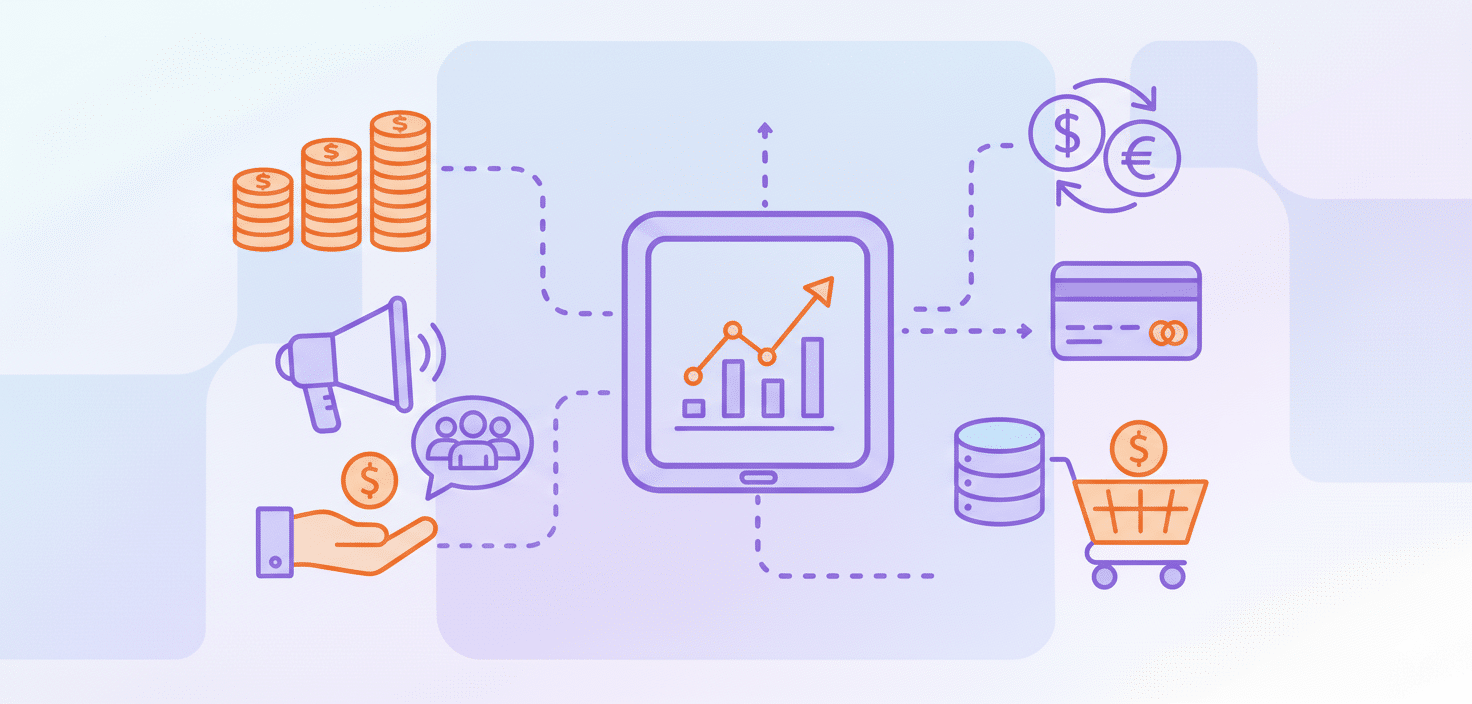Growth Strategies
What is SaaS Revenue Generation?

What is SaaS Revenue Generation?
SaaS revenue generation is the manner in which Software-as-a-Service companies earn income, specifically through subscription-based models.
- Customers access the SaaS product after paying a regular fee.
- This pricing model correlates with the SaaS company having resources available for system updates and maintenance.
- SaaS businesses must strategically consider various revenue models to find the correct fit for their product and market.
What are common SaaS revenue models?
SaaS revenue models include:
- Subscription-Based:
- The model is utilized by a notable number of SaaS companies.
- Generates a significant portion of income via recurring customer fees.
- Tiered Pricing:
- Service levels and associated prices vary, offering different options.
- Pay-Per-User (or Usage-Based):
- Offers scalability by charging customers based on usage or the number of users.
- Ad-Based:
- Requires high traffic to be profitable.
- Often needs to be combined with other revenue strategies for sustainability.
What are effective SaaS revenue generation strategies?
SaaS revenue generation strategies measure ROI and monitor customer retention and revenue expansion.
- Marketing & Sales:
- Content Marketing
- Targeted Advertising
- Strategic Partnerships
- Pricing & Payments:
- Regular testing with pricing strategies
- Offering users a range of payment methods and potential discounts may affect adoption rates.s
- Annual pricing options may be related to extended customer commitments.s
- Optimizing free trial periods
- Technology & Data:
- Using AI-powered predictive analytics
- Customer Success (CS):
- CS teams function as revenue engines, as through the strategies used, they can improve expansion revenue and renewals.
- Renewals and expansion account for approximately 40% of SaaS revenue.
- Customer success teams are an integral part of SaaS revenue generation.
How do you effectively track and forecast SaaS revenue?
Tracking and forecasting SaaS revenue relies on monitoring metrics, using both advanced modeling and implementing dedicated technology.
Key Metrics to Monitor
- Expansion MRR and Churned ARR are metrics that can provide detailed insights into SaaS revenue.
Forecasting Methods
- Cohort-based forecasting
- Time series projections
- Scenario planning (e.g., modeling revenue impacts under varied assumptions)
Required Technology
- Business Intelligence (BI) platforms
- Customer Relationship Management (CRM) systems
- Used to track CAC, CLV, and churn rates.
How do customer needs impact SaaS revenue generation?
Customer needs fundamentally impact revenue through three key areas: retention, satisfaction, and expansion.
- Meeting customer needs can influence retention and satisfaction, potentially affecting renewal rates and revenue predictability.
- Expansion: Companies with high Net Revenue Retention (NRR) demonstrate a mastery of:
- Upselling
- Cross-selling
- Feature Adoption
Prioritize understanding and addressing customer needs through feedback and proactive customer success initiatives to enhance product offerings and drive revenue growth.
How does a value proposition drive SaaS revenue?
A strong, customer-centric value proposition is essential for revenue growth across the customer lifecycle.
- It must highlight the unique benefits and focus on tangible value over mere features.
- Impact on Revenue:
- Higher conversion rates
- Lower Customer Acquisition Costs (CAC)
- Increased customer loyalty
- Action: Clearly communicate the value proposition to differentiate the product, align sales and marketing strategies, and demonstrate how the product solves specific problems.
How does product differentiation impact SaaS revenue generation?
Product differentiation is critical for establishing a competitive edge and driving profitable revenue growth.
- Benefits of Effective Differentiation (through unique features, pricing, or service):
- Could be a factor in pricing considerations.
- May influence customer loyalty.
- Has the potential to affect growth and profitability metrics.
- Has the capacity to affect revenue by potentially doubling it, and impact gross margins by approximately 50%.
- Action: Align product features with customer expectations, constantly innovate, and monitor differentiation as a key risk factor for sustained growth.
What are the key SaaS revenue KPIs?
These metrics offer essential insights into customer behavior, financial health, and long-term business viability.
|
KPI |
Full Name |
Primary Purpose/Insight |
|
MRR |
Short-term recurring revenue and growth. |
|
|
ARR |
Long-term, high-level revenue outlook. |
|
|
CLV |
Total worth of a customer over the relationship. |
|
|
CAC |
Cost to acquire a new customer. |
|
|
Churn Rate |
Rate of customer or revenue loss. |
|
|
NPS |
Customer satisfaction and loyalty. |
- Financial & Viability: Crucial for forecasting future cash flows and evaluating long-term business prospects.
- Strategic Focus: Focusing on metrics like revenue growth rate and CAC payback period helps in retaining and expanding the existing customer base, particularly vital during economic shifts.
Balance: SaaS companies must balance new customer acquisition with user retention efforts, adapting strategies as economic conditions impact these indicators.
Conclusion
SaaS revenue generation is an important part of running a SaaS company. An effective revenue strategy will focus on subscription models, flexible pricing options, content marketing, and expansion and renewal revenue, with the help of the customer success team. Continuously monitoring relevant KPIs such as MRR, CAc, ARR, and CLV is an integral part of the SaaS revenue generation process.